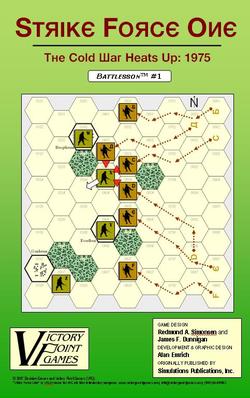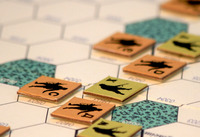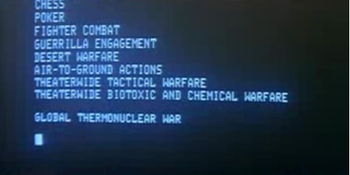Strike Force One - A Wargame Review.
 Monday, October 17, 2011 at 12:28PM
Monday, October 17, 2011 at 12:28PM

This is a review from a series of articles I am writing about my foray into wargaming. The introduction to these articles, with a bit of background can be found: here.
The first game that I played was Strike Force One, Designed by Jim Dunnigan and Redmond A. Simonsen. “Strike Force One” was originally published in 1975, and designed as a very basic introduction to wargames. It was rebublished, and given a graphical facelift, in 2007 by Victory Point Games, as the first of their BATTLESSON line of games. Victory Point Games' BATTLESSON line is their beginner, teaching line of games that work to teach the basic mechanics found in wargames, and give the player some initial strategy to get them started.
Components:
Like all of Victory Point Games' offerings, Strike Force One comes packaged in a plastic baggie, with components printed on a high end desktop publishing setup. This process delivers colorful, clean components that serve their function nicely. The printed components sport a matte finish, so they don't have the glossy look of other games that use an offset printing process; although, in some ways this can be a boon, as overhead lights won't cast a glare across the pieces during play.
Strike Force One comes with a small, thick cardstock map; a set of 12 die-cut cardboard counters; some charts to determine combat results; and various printed booklets describing the basic and advanced rules, as well as a very insightful, illustrated playthorugh of a typical game. This playthrough is accompanied with commentary to explain the rationale behind each move, and better familiarize the player with the strategies and tactics required to play. All of the components are full color, but have a simple and direct art style.
The Game:
It is important to remember that Strike Force One, first and foremost, serves as a game to introduce the basic mechanics of wargames to new players. The basic game plays with 10 units, on a 9x8 hex based map. The game takes place during a fictional encounter between the United states and the Soviet Union in West Germany during the mid 1970's. One player assumes the role of the United States, defending the cities pictured on the map, while the other player controls the Soviets, attempting to sieze control of at least two of the cities. The game consists of only 4 rounds, so each game only takes 15 minutes or so, but the  simplicity of the game allows players to focus on the core mechanics that the game teaches. There are two distinct games in the Strike Force One package, the basic game, and the advanced game, and each one of these games focuses on teaching a distinct toolset.
simplicity of the game allows players to focus on the core mechanics that the game teaches. There are two distinct games in the Strike Force One package, the basic game, and the advanced game, and each one of these games focuses on teaching a distinct toolset.

